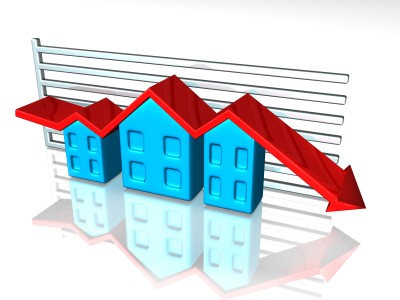
Condo inventory has fallen substantially in the West Loop in the last four years, and some developers are taking notice.
One of the defining traits of the post-bubble housing market was the excess supply of new housing units, many of which languished on the marketplace for months, if not years.
Few areas in Chicago better demonstrated this fallout than the West Loop, where hundreds of unsold condo units sat vacant without a buyer.
But that was then. Now, condo inventory in the West Loop has undergone an about-face, and the same market that was once plagued with an excess of units now has too few available; and it’s inspired some interesting behavior among developers.
Condo Inventory in the West Loop Plummets, Inspires Developers
The numbers speak for themselves – according to a market report from Appraisal Research, there were 973 unsold units in the West Loop in Q3 2008; now, there are just 46, a remarkable turnaround for the market that has made one developer rethink his business strategy.
As David Lee Matthews reported earlier today on Crain’s, Bill Senne, the developer of the the 212-unit Emerald condominium at 123 S. Green St., had begun renting his units when the market slowed, but now, with condo inventory down and homebuyer interest up, Senne has opted to not renew the leases of Emerald’s tenants, and will instead focus on selling the condominium’s units. And Senne seems confident – according to Matthews’ report, the $378-per-square-foot average listing price for Emerald’s units is greater than the $367 average when the project launched in 2006.
Chris McComas – “Buyers are out there”
Chris McComas, a consultant with @properties on the Near West Side, said Emerald’s return to the for-sale market shows that “buyers are out there,” and that the condo market in Chicago’s western neighborhoods is poised to make a strong return.
Echoing the sentiments of a Reis study from late 2012, McComas explained that rents on the West Side have been “skyrocketing” in the last three/four years, with renters having few options for their housing needs; now, though, owning is cheaper than renting, and he’s anticipating many renters to enter the homeownership market in the next couple months as their leases expire. And given that housing inventory remains low on the West Side, he’s also anticipating additional developments to return to the for-sale market.
“I think the first quarter will be a very strong quarter,” McComas said.
Valuable info. Lucky me I discovered your site accidentally, and I am shocked why this accident did not happened in advance! I bookmarked it.
The West Loop is also developing at a rate that I’ve yet to see any other part of the city come close to. In 2008 much of the area consisted of vacant lots. Now when I walk down the street, I see nothing but brick, glass and steel buildings. So many different types of businesses, restaurants, cafes, groceries, sporting good stores, schools, parks, galleries, live music venues and plenty other places constantly opening. I can go on and on. I love the ethnic diversity and the close knit community aspect of the WL. It’s becoming very bohemic in fact. Families seem to be drawn to the area as well, I assume because of the great schools. You’ll always see the groups of teenage students hanging out together without parental guidance. This is an absolute testament of how great the neighborhood is. The WL feels like an old school neighborhood in a big city. How most people would imagine a successful city should be. Very close to downtown yet it has a community feel. I don’t currently live in the West Loop but I obviously love spending time in the area. My plans are to buy a two or three flat building just west of the United Center this year, because I want to become a part of this neighborhood before real estate gets too expensive. The demand is certainly pushing development further west.